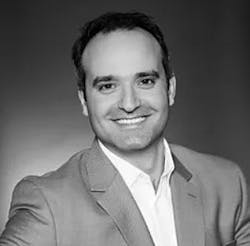Why Microgrid Projects Start with Energy Monitoring and Energy Efficiency
Why do microgrid projects need to start with energy monitoring and energy efficiency? Jules Nohra, director of optimization services, Veolia North America, explains in an interview with Yasmin Ali, Microgrid Knowledge contributor.
Why is it important to make a facility as energy efficient as possible before you install a microgrid?
Jules Nohra: The first, and probably the most important reason, is to make sure the microgrid is not oversized. Energy efficiency measures reduce a facility’s energy demand, so taking these measures after installing a microgrid would result in it being oversized, meaning that the capital cost was unnecessarily high. The second reason is because energy efficiency is typically a lot cheaper to implement than a microgrid.
Energy efficiency has evolved far beyond efficient light bulbs and HVAC systems. What are some of the key elements and technologies used today?
JN: A key development is using data for the identification of energy efficiency measures. Data science and machine learning allow us to continuously monitor the performance of buildings on a large scale, for a variety of buildings, and helps build a continuous picture versus a one-time snapshot of a facility. Improvements in the data science field also mean that we can do continuous commissioning at scale and a lot more intelligently that we did in the past.
What is “continuous commissioning”?
JN: Let’s start with commissioning. Equipment installed in a new building is usually commissioned, or tested to make sure that it is operating as per the design specification. Unfortunately this process isn’t always perfect. In some cases, issues are missed during commissioning, for example a piece of equipment is left in manual mode for years to come, without anyone noticing. You would have paid a lot of money to install a piece of equipment that essentially doesn’t do anything.
Retro-commissioning is going back to a building that has been operating for a long time and commissioning it. Some places will re-commission every few years, as equipment in buildings tends to drift away from the specification over time.
And finally, continuous commissioning is essentially continuous monitoring of energy performance and equipment in a building to make sure that you’re never drifting away from the original design intent.
What role do on-site technicians play in energy monitoring and efficiency?
JN: Facility operators know their site very well, but in my experience, they’re busy with comfort calls, budgets, and maintenance issues. They have to deal with immediate problems, so a lot of them don’t have time to analyze and use building data to improve energy efficiency. Veolia’s Hubgrade centers provide engineers and analysts, sitting in a central remote location, serving as an extension of that onsite technician team.
We have a lot of expertise in operating and maintaining sites, but we also have expertise behind the scenes, our engineers and analysts know a lot about buildings, data science, and business intelligence. The concept of Hubgrade is having these hidden figures in a central remote location, reviewing live data via models and algorithms developed internally within Veolia. They work with the onsite technicians and the building managers to identify issues and correct them to ensure efficiency. It’s beneficial to both to be in continuous communication so that the building is always running optimally.
We also provide dashboards for building operators, managers or owners to view real time operational data, and track key performance indicators over time based on building performance.
What first steps should facility managers take to begin the process of improving energy efficiency in preparation for a microgrid?
JN: The traditional energy audit is a good place to start, especially if they’ve never done it before. This will identify the low hanging fruit like energy efficient light bulbs; they should make sure the recommendations made by the audit are taken care of. It’s also important to look at operations and confirm you’re operating optimally in terms of energy performance. This means reviewing real time data sources, and installing meters or sensors to capture any missing data.
We would normally need at least nine months of monitoring, which covers both summer and winter and one shoulder season, so either spring or fall. If that isn’t possible, we can typically work with anywhere between three to six months of data. The facility managers could engage someone like Veolia to do real time energy monitoring to verify that the facility and the building is running as optimally as possible before proceeding with a microgrid.
Do you usually find that there is a lot of room for improvement in energy efficiency?
JN: Typically, yes. It depends on the customer, how much they usually spend on energy, or how much they spend on facilities management. The most efficient customers identify at least 5% of savings on energy costs, and the least efficient get close to 25%.
Should energy monitoring continue after installation of a microgrid?
JN: Many of our customers gain benefit from us actively monitoring the performance of their microgrid, and making recommendations on how to operate. We’re piloting a model that we’ve built internally to help customers dispatch their cogeneration plants based on temperature requirements, energy cost, and other factors. The journey doesn’t end at energy efficiency before the microgrid, there’s a lot of value that can be provided after.
Jules Nohra is the director of optimization services Veolia North America.
